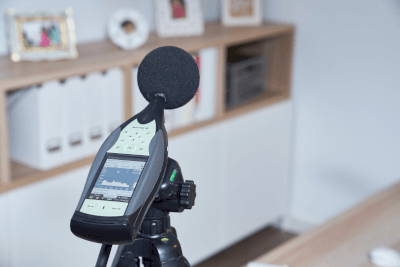What Is an Acoustic Measuring Instrument?

An acoustic measuring instrument is an electronic device that measures sound pressure (the force of sound waves) and frequency (the rate at which sound waves vibrate). It is used for tasks such as assessing noise at specific periodic constants, measuring low transmission frequency characteristics, and determining safe loudness ranges.
Compact models with lightweight microphones are available, suitable for various applications including concert hall design, where they enable precise measurements and settings adjustments for optimal acoustics.
Uses of Acoustic Measuring Instruments
These instruments are used in urban redevelopment, assessing interior comfort in high-speed vehicles like bullet trains, evaluating soundproofing levels in buildings, and setting up concert halls. They are also crucial in testing the sound insulation of building materials and fittings, and in developing new materials with specific sound absorption properties.
Principles of Acoustic Measuring Instruments
Acoustic measuring instruments primarily record sound frequencies and noise levels, converting sound pressure into decibels for easy display. They are essential in settings like concert halls for tasks like low-frequency response measurements, ⅓-octave analysis, and determining maximum and minimum audible values. Additionally, they can provide valuable data for environmental features in buildings, such as the effectiveness of soundproofing in condominium walls or the acoustics quality when incorporating musical instruments like grand pianos.